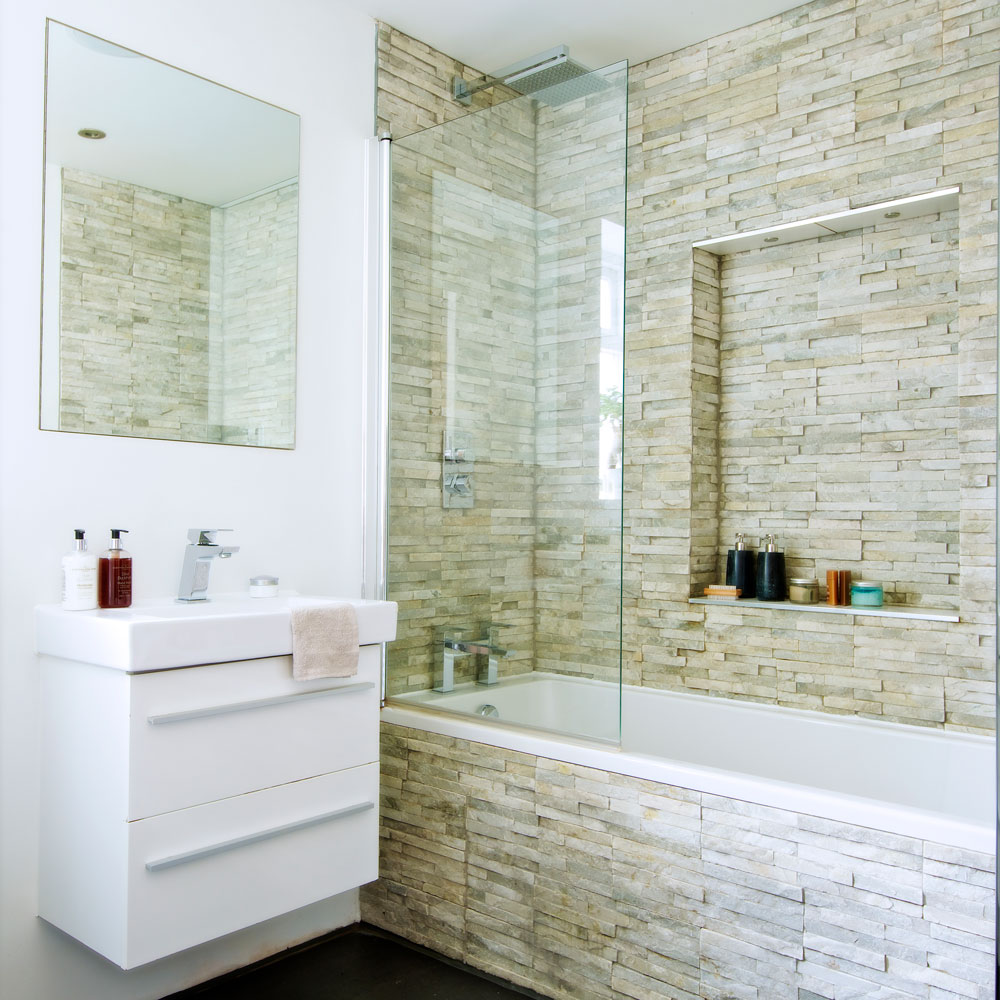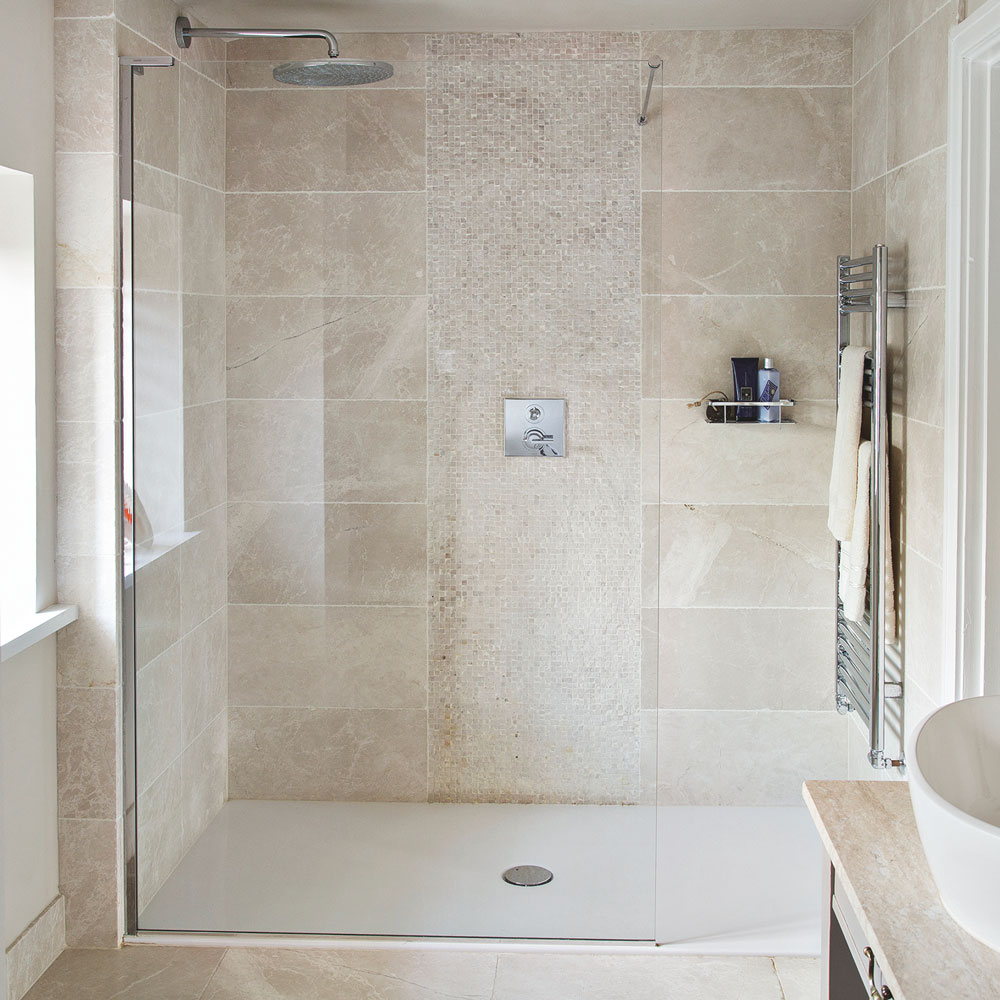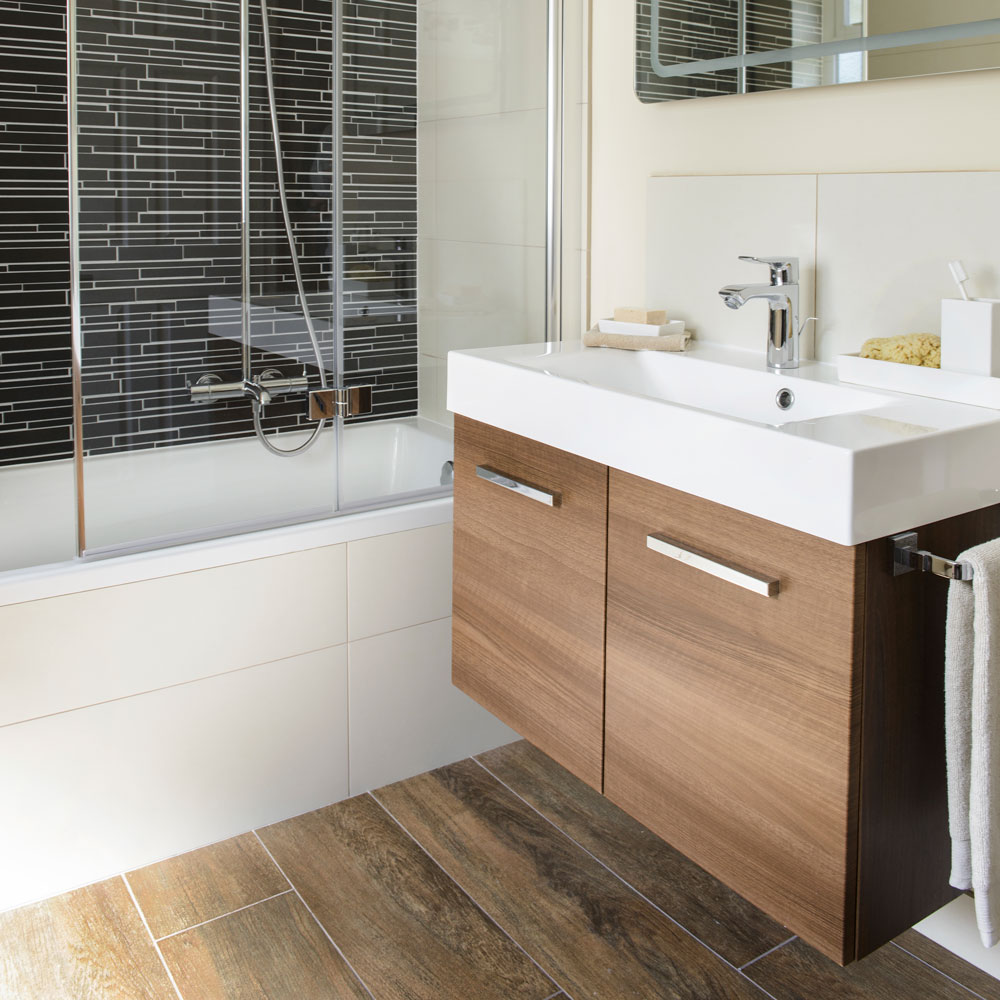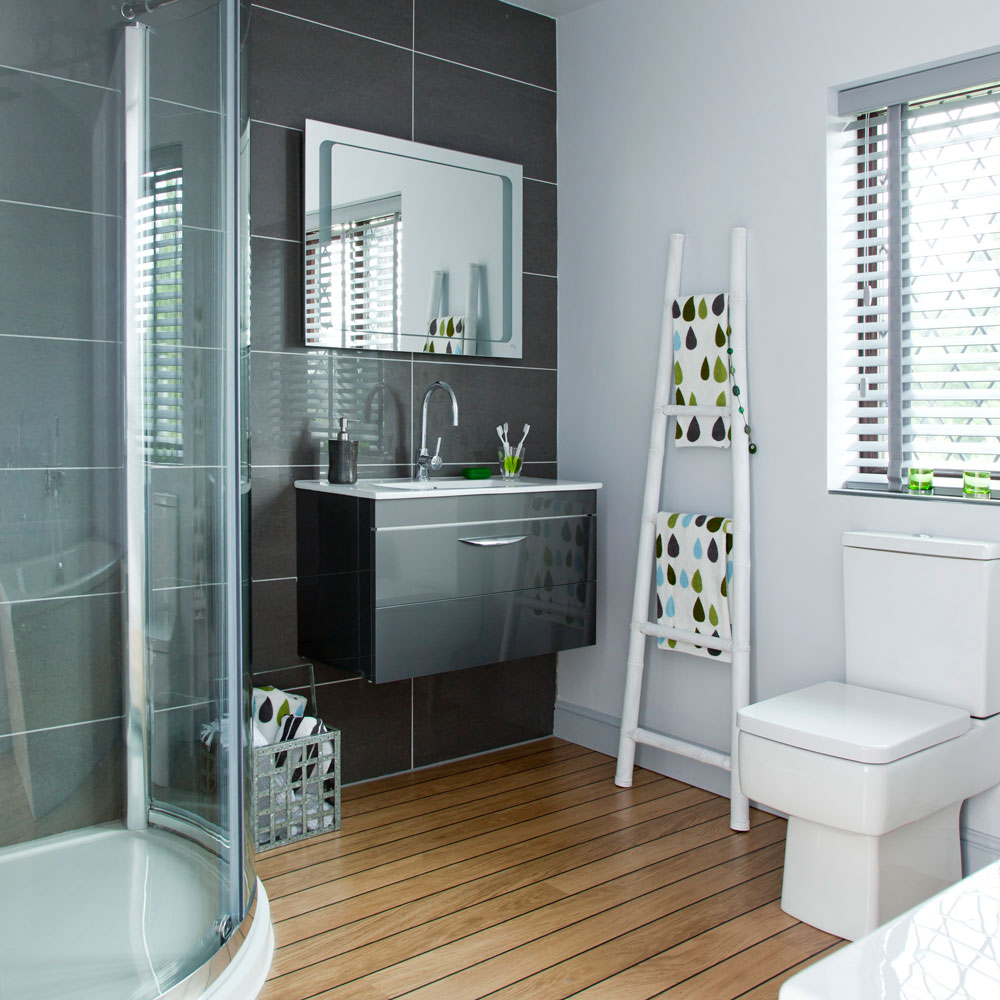10 tips for using underfloor heating in a bathroom
Discover how underfloor heating can give your bathroom or shower space comforting warmth underfoot

Installing underfloor heating in a bathroom can work wonders when it comes to taking the chill off cool floor tiles, transforming the space into a warm, spa-like haven.
As well as creating an enviable level of comfort by establishing an even spread of warmth underfoot, a well-designed underfloor heating (UFH) system is energy-efficient and low-maintenance.
'Nowadays people want to get the most out of their bathrooms with spectacular designs, bigger tiles and as little clutter as possible,' says Lydia Luxford, technical and customer services manager at Easy Bathrooms. 'UFH provides a great addition to this, reducing the requirement for radiators and freeing up space.'
Tips for installing underfloor heating in a bathroom

Here, we lay out what you need to consider when it comes to creating the perfect underfloor heating in a bathroom or shower room.
1. Pick the best underfloor heating system
The correct setup depends largely on your circumstances – electric underfloor heating systems are typically easier to install but come with higher running costs. Electric solutions are often the go-to choice for installation in one-off rooms, including bathrooms, as they can be laid directly over any solid subfloor and result in little height build-up.
'Electric also allows that single area to be controlled via its own thermostat,' says Lydia Luxford. 'Plus, in small spaces electric systems are relatively low cost and spending a little more money to purchase a programmable thermostat is well worth the initial outlay.'
Water-based underfloor heating in a bathroom usually requires a little more work to fit – especially in retrofit scenarios – however, the monthly running costs will be lower.
Get the Ideal Home Newsletter
Sign up to our newsletter for style and decor inspiration, house makeovers, project advice and more.
2. Get the positioning right
To provide the correct heat output and an even spread of warmth across the floor, it’s important that the cables/warm water pipes beneath your flooring are laid at neat, regular intervals. The higher the heat output that is required, the more closely the cables/pipes will be laid.
Loose wire systems tend to work well in bathrooms as they can be arranged to fit around the irregularities of fixtures and fittings. 'The Warmup Loose Wire system is designed specifically for irregularly shaped rooms and those with multiple fixtures,' says Sarah Wazir, a marketing executive at Warmup. 'The spacing between the wires can be altered to match your needs and the required heat output.'
For an additional flourish of luxury, some loose wire arrangements can even be installed behind your bathroom’s wall tiles.
3. Choose the right flooring for underfloor heating

'Underfloor heating works well with wood, tiles or stone flooring,' says Adam Chard, content manager at Victoria Plum. However, smooth, hard surfaces like porcelain and ceramic tend to have the edge over other solutions when it comes to heat conductivity.
'Tiles are always a strong favourite and can withstand the heat in most applications. When installed correctly they can last substantially longer than most other flooring options,' says Lydia from Easy Bathrooms. Tiles are easy to clean in case of splashes from the sink and shower, too. Be sure to choose a product with an anti-slip surface.
Some laminate and vinyl products are not suitable for use alongside electric underfloor heating. So be sure to check with your supplier that the UFH kit and floor surface are compatible.
4. Set the temperature correctly on your underfloor heating in a bathroom
Managing your underfloor heating in a bathroom by setting the thermostat properly will save you energy and money in the long term. One common misconception is thinking that adjusting your thermostat to a higher temperature will heat up the space quicker.
This isn’t the case and may even result in overheating and wasting energy. Setting a temperature of around 21°C is adequate in most bathrooms, depending on the unique heat requirements for the space. Most products come with detailed instructions on how to best make your underfloor heating efficient by setting the correct temperature for a cosy space.
5. Leave your underfloor heating on
During the chilly winter months, it’s worth keeping underfloor heating in a bathroom running continuously. 'When you’re living in cooler conditions, your UFH will take some time to warm up,' says Adam from Victoria Plum. Constantly turning the heating on and off may result in wasting energy.
A temperature between 16°C and 25°C is advised when leaving the heating running for long periods of time. This will ensure the setup runs efficiently and provides a consistent level of warmth.
6. Ensure your system is serviced

One of the main benefits of UFH is how little upkeep is required. In particular, an electric setup won’t require regular servicing – provided it has been installed correctly. 'If you have a water-based system, it’s best to have it serviced every year, just like you would your boiler,' says Barrie Cutchie, design director at BC Designs.
'They can just check it is working efficiently and identify any potential issues before they happen. It isn’t a requirement but it is good practice.'
7. Get the heat output right
'In rooms with exceptionally high ceilings, UFH can be less effective,' says Adam from Victoria Plum. That’s why it’s so important for your heating engineer or plumber to carry out a full heat loss survey on the bathroom before the system is specified.
The calculations look at an array of factors, including the dimensions of the room, level of insulation, windows and the existing forms of heating. The numbers are then crunched so that a setup with the correct heat output for the space can be specified.
8. Check the subfloor
When it comes to installation, make sure the subfloor is stable, rigid and flat. If there’s no insulation, it’s fairly straightforward to fit rigid insulation boards. This will ensure the warmth your system generates isn’t lost downwards.
'Looking at the quality of your subfloor is such an important step,' says Barrie from BC Designs. 'There is an ideal when it comes to this area, and that’s a fully-cured, fully-level concrete floor between 60 and 75mm – but this isn’t always possible. The main thing is to make sure the floor is completely level before UFH is laid.'
9. Create a smart underfloor heating setup

Investing in a smart thermostat takes the amount of control you have over your underfloor heating in a bathroom the next level. For example, Hive's smart thermostat allows you to manage your system remotely and help you set up an automatic heating schedule.
This means that your bathroom will always be the right heat when you need it to be. An especially handy feature if you’re coming back from holiday and want a quick shower when you get home. What’s more, a smart system that learns your routine will help you cut down on wasting energy to heat the bathroom when you’re not using it, ultimately saving you money on bills.
10. Create a hybrid setup
While getting rid of radiators will free up wall space and give you more freedom to position fixtures and fittings in your family bathroom, there are some advantages to having a hybrid setup when considering underfloor heating in a bathroom.
A slim towel rail, for instance, provides a handy spot to warm towels or clothes so they’re toasty when you get out of the tub or shower. Numerous compact designs are available to suit even the smallest of bathrooms.

Rebecca Foster started her journalism career in Bangkok in 2013, where she worked on the in-house editorial team at a luxury homes magazine. Since then, Rebecca has contributed to numerous property and interiors titles in the UK and Southeast Asia. She re-located to London in 2015 to work at one of the country’s leading self-build and home renovation magazines. In 2017, she left her job to split her time between freelance journalism and teaching yoga.
-
 Should your front door colour match your hallway? Interior experts reveal 3 reasons why it should (and 3 reasons it shouldn't)
Should your front door colour match your hallway? Interior experts reveal 3 reasons why it should (and 3 reasons it shouldn't)Are you team matching or contrasting?
By Ellis Cochrane
-
 This £200 limited-time discount makes this Dyson vacuum cheaper than I’ve ever seen it - run don’t walk to Argos for this bargain
This £200 limited-time discount makes this Dyson vacuum cheaper than I’ve ever seen it - run don’t walk to Argos for this bargainIt's the most affordable Dyson on the market right now
By Lauren Bradbury
-
 Martin and Shirlie Kemp’s pastel flower beds has given their Victorian renovation a romantic look - how you can get the look
Martin and Shirlie Kemp’s pastel flower beds has given their Victorian renovation a romantic look - how you can get the lookTheir pastel garden is the cottage garden inspo you've been looking for
By Kezia Reynolds